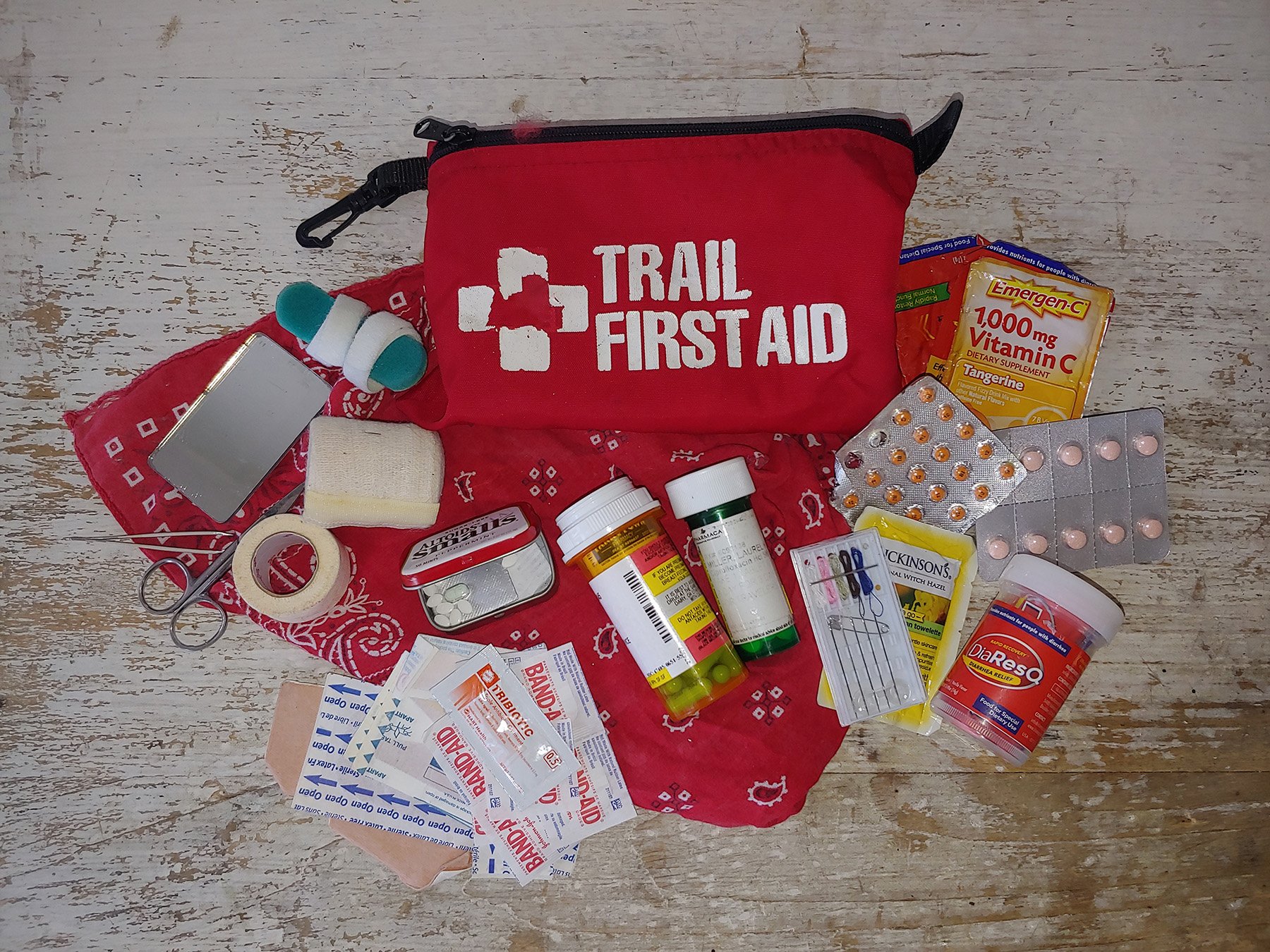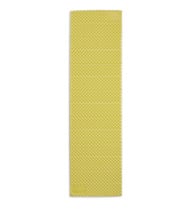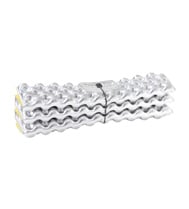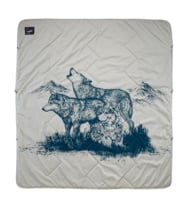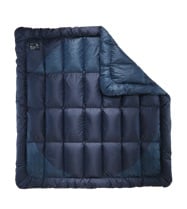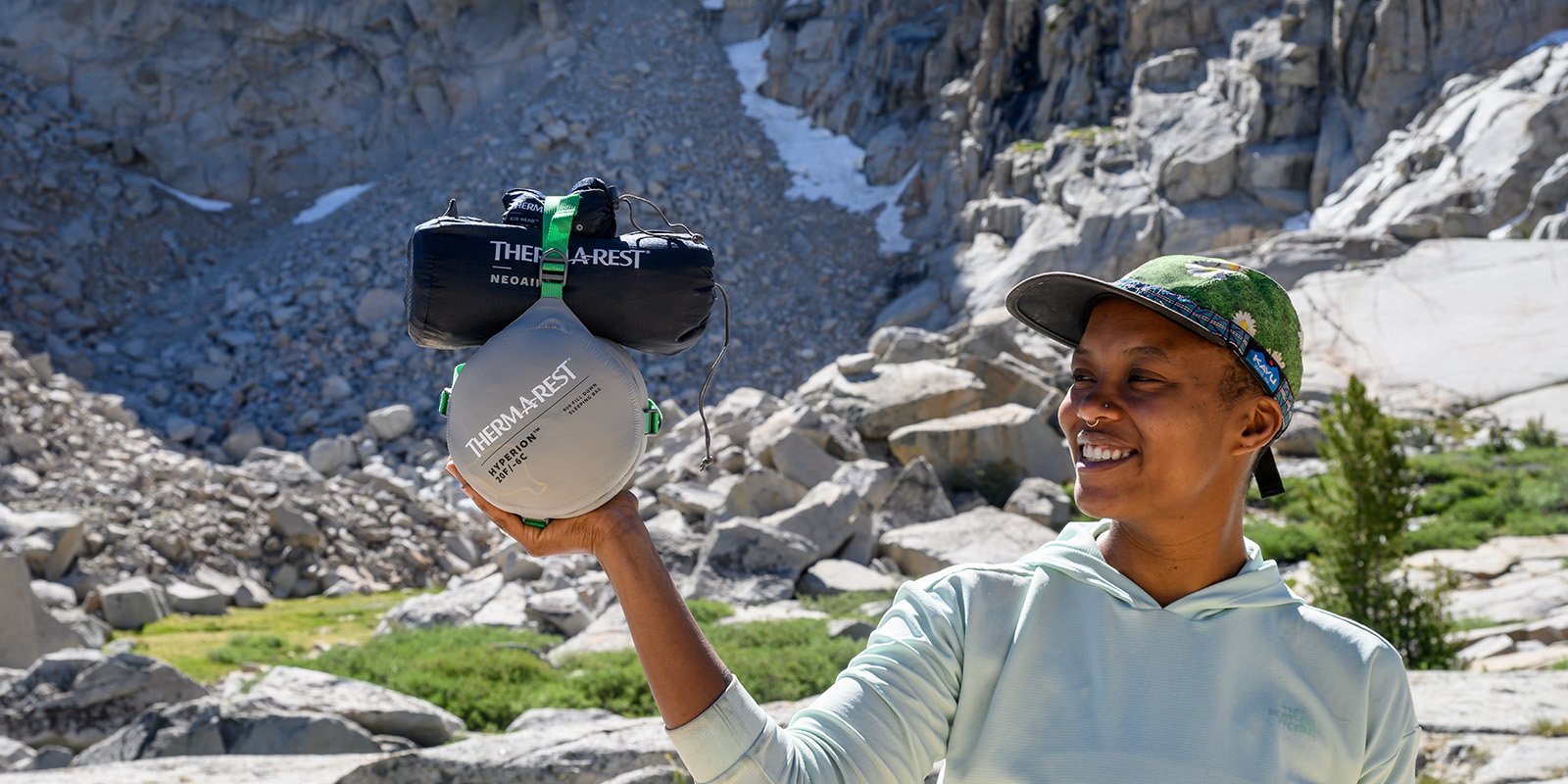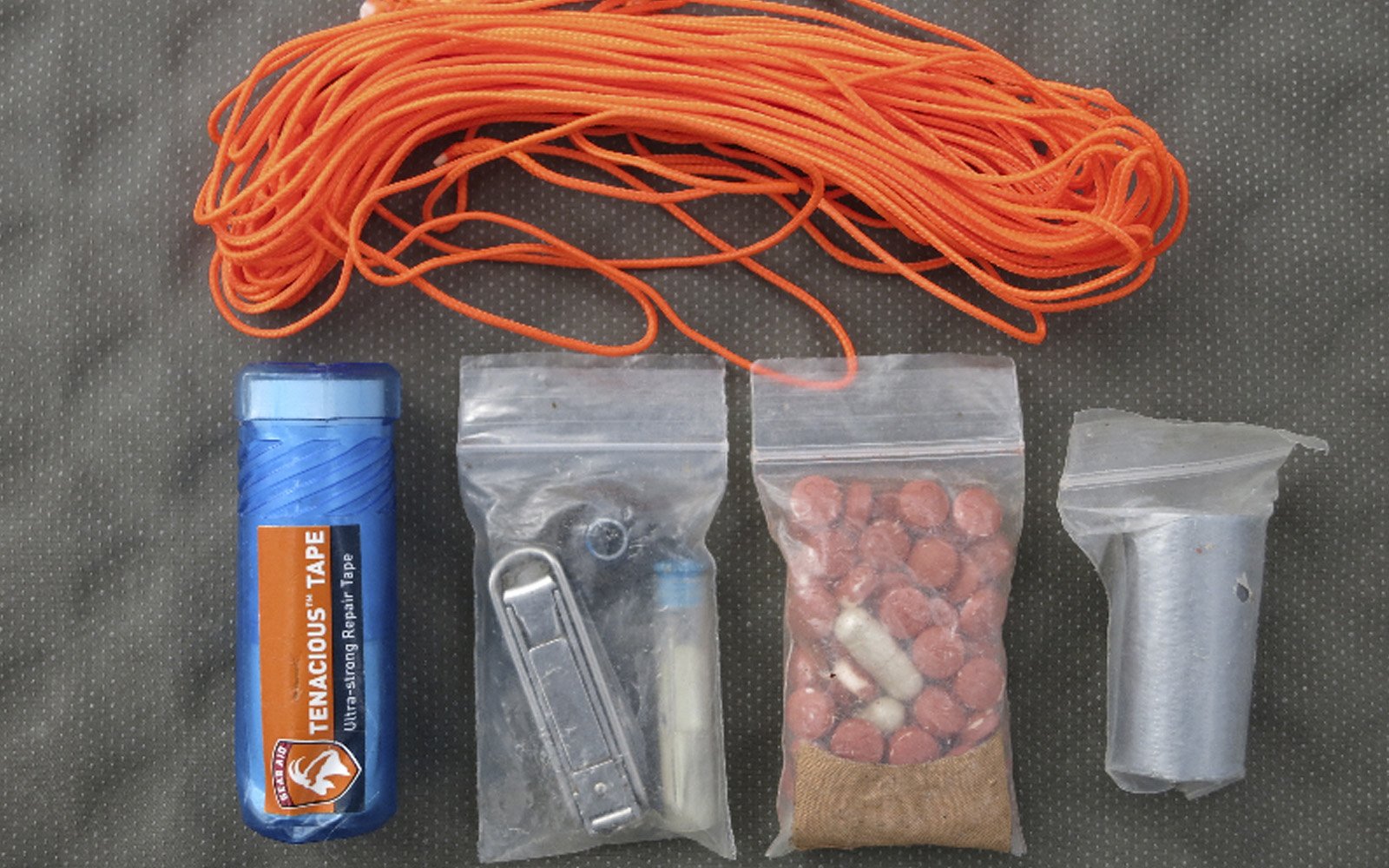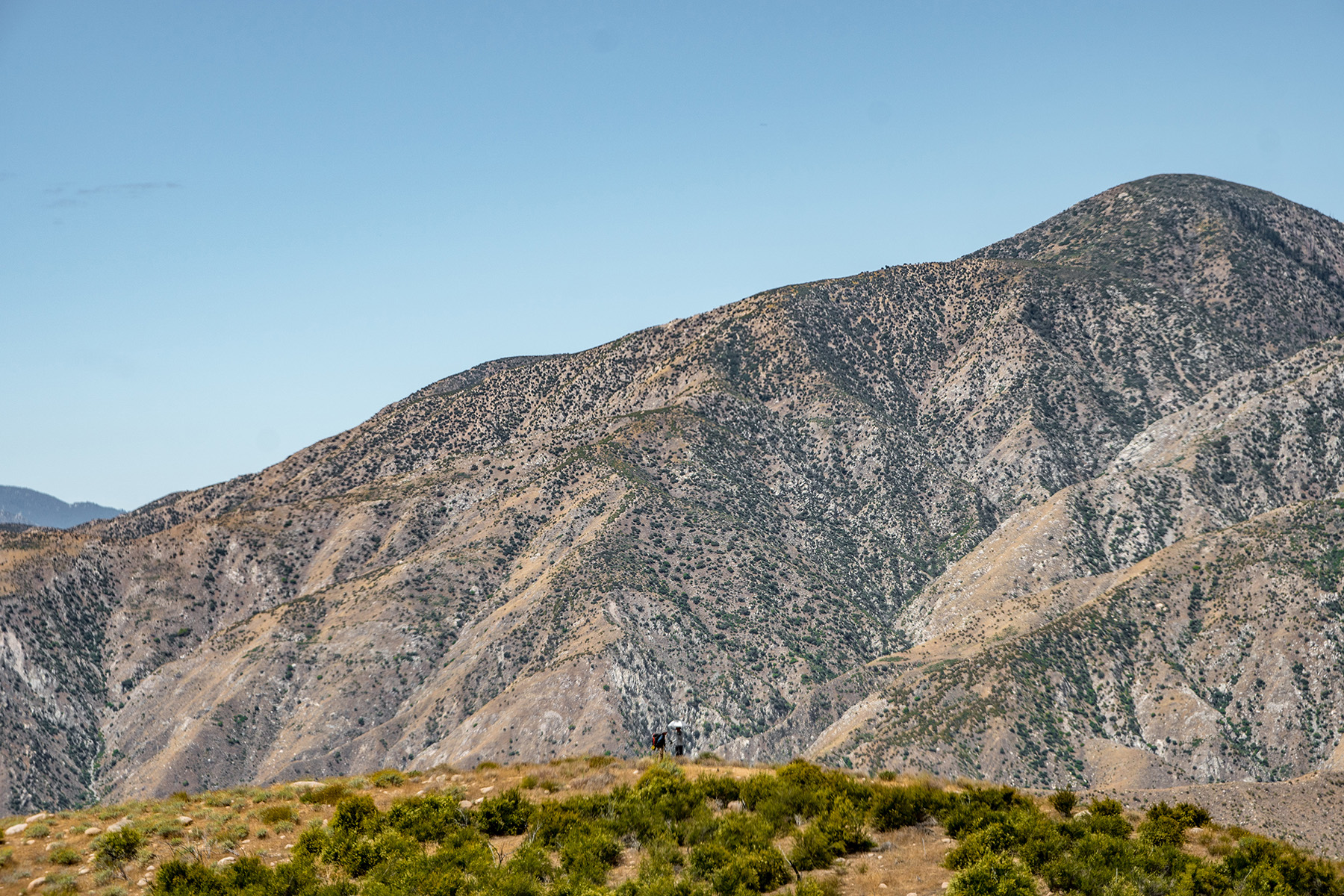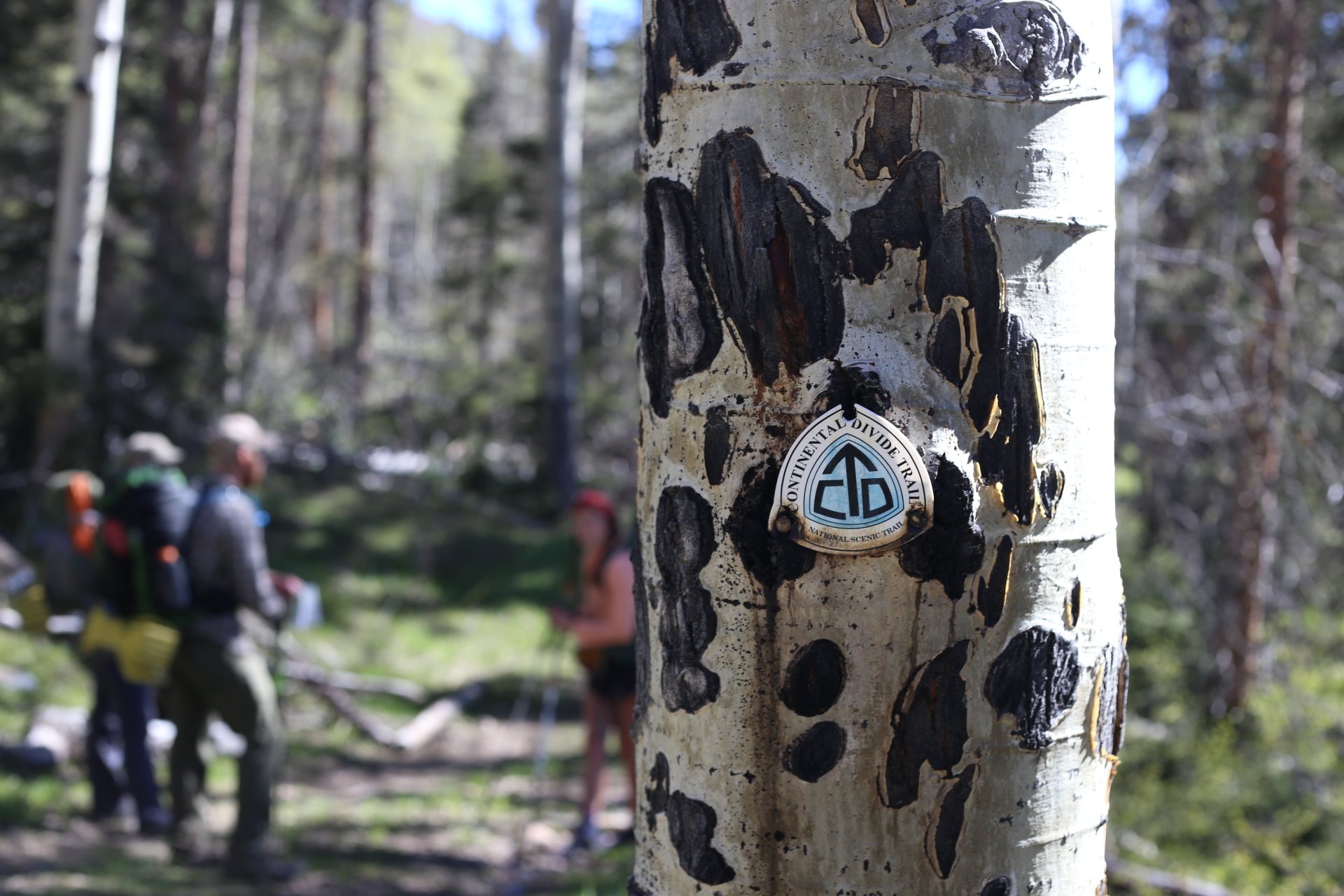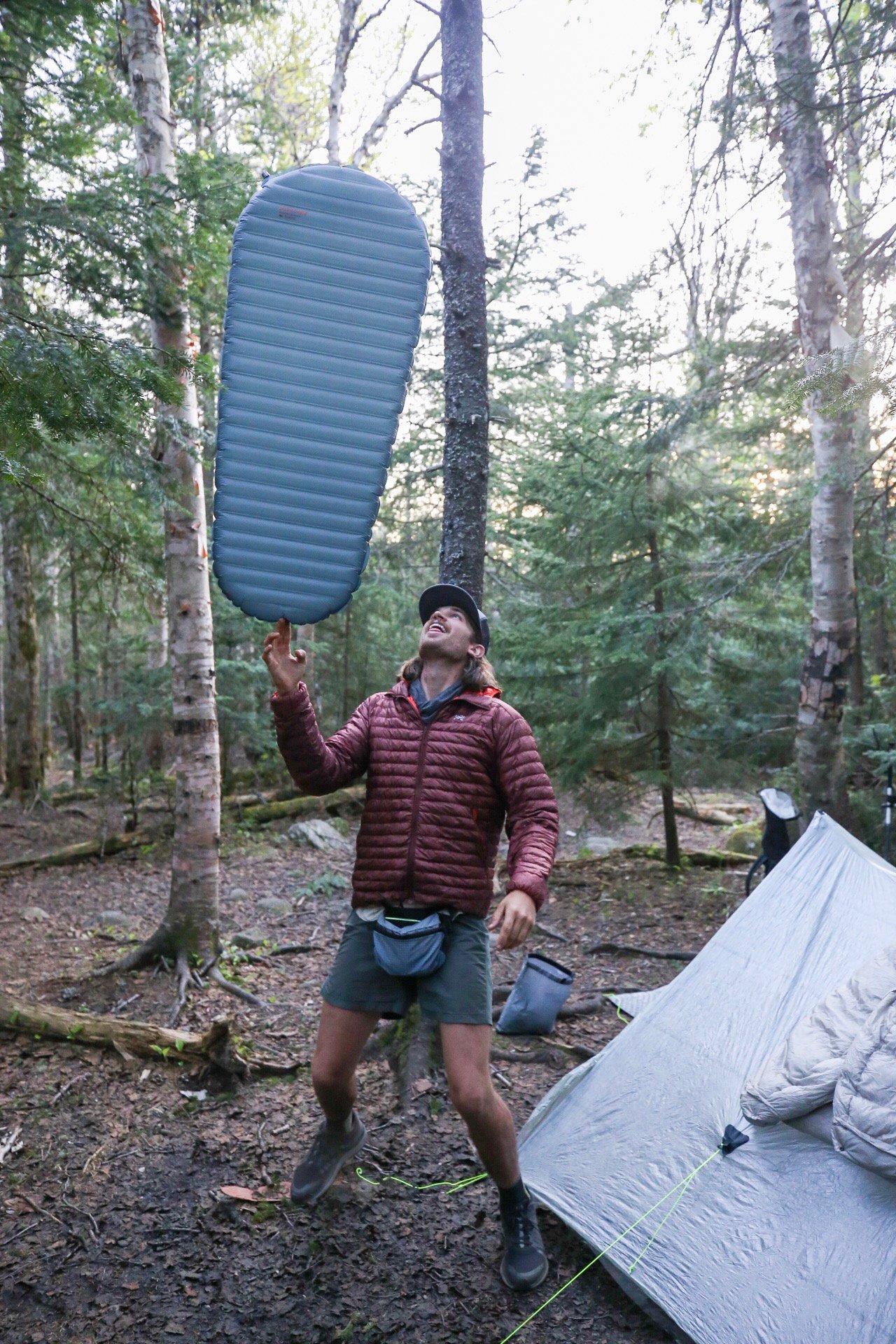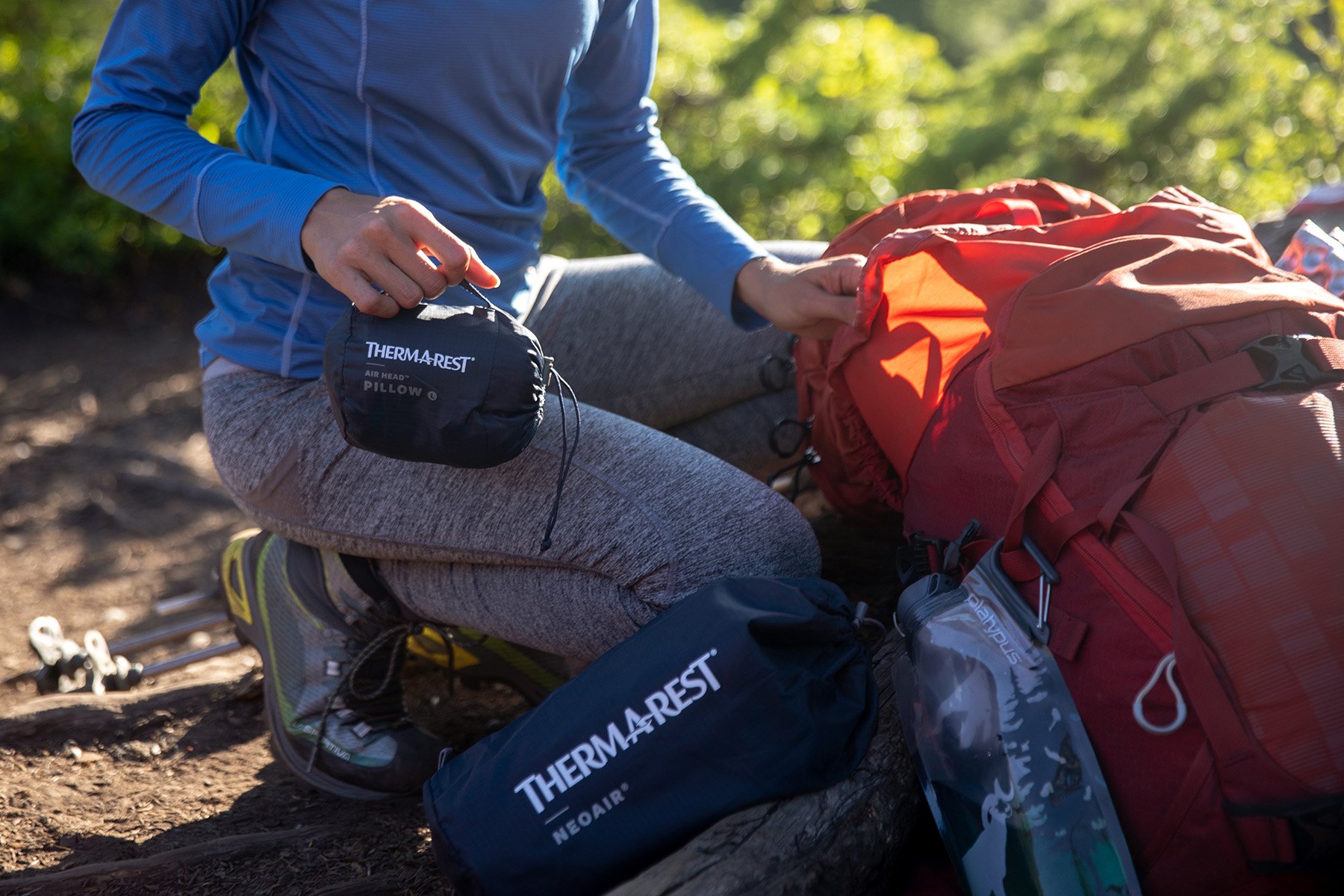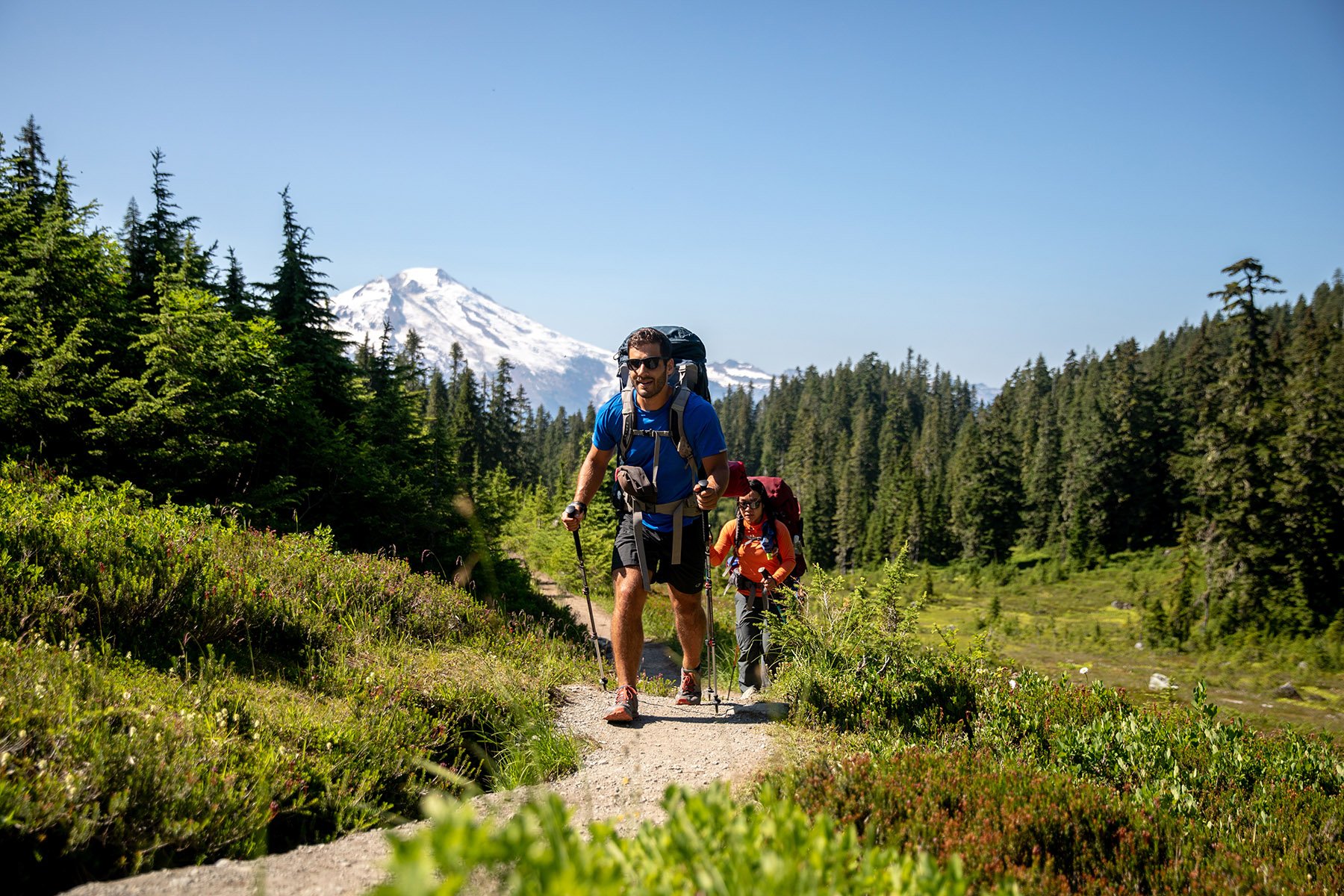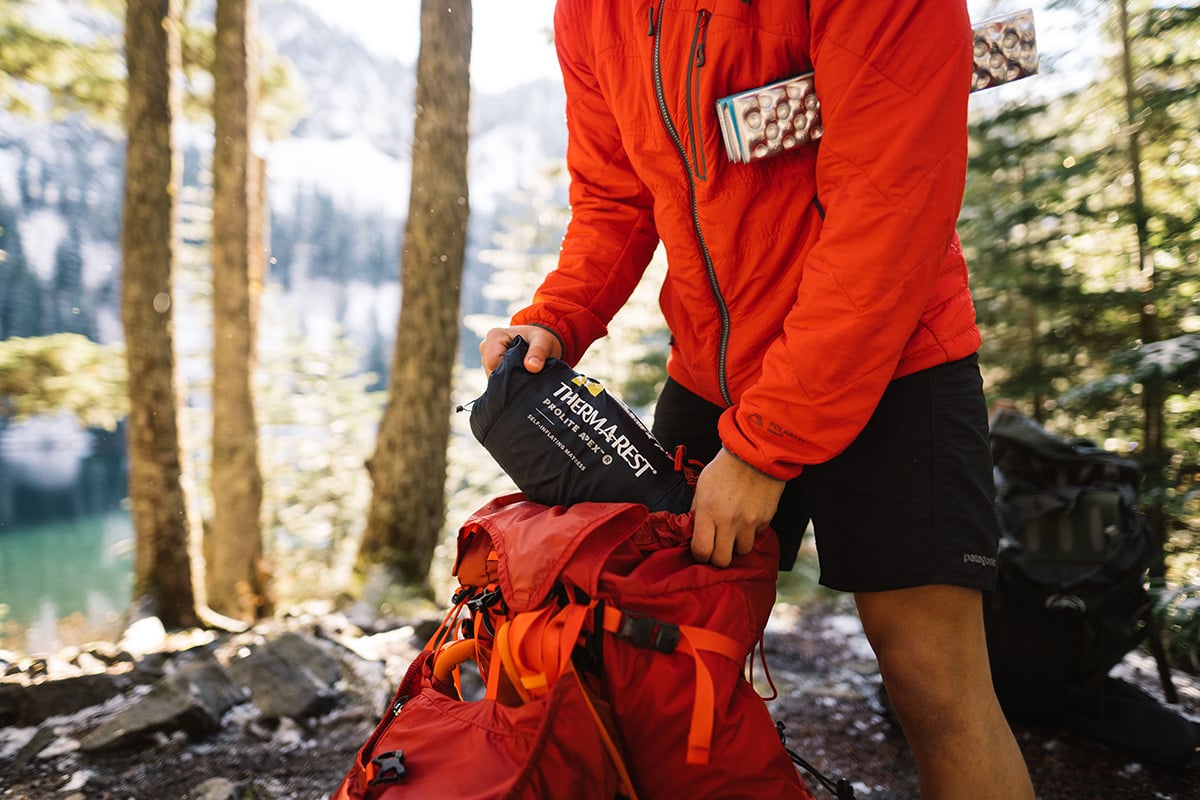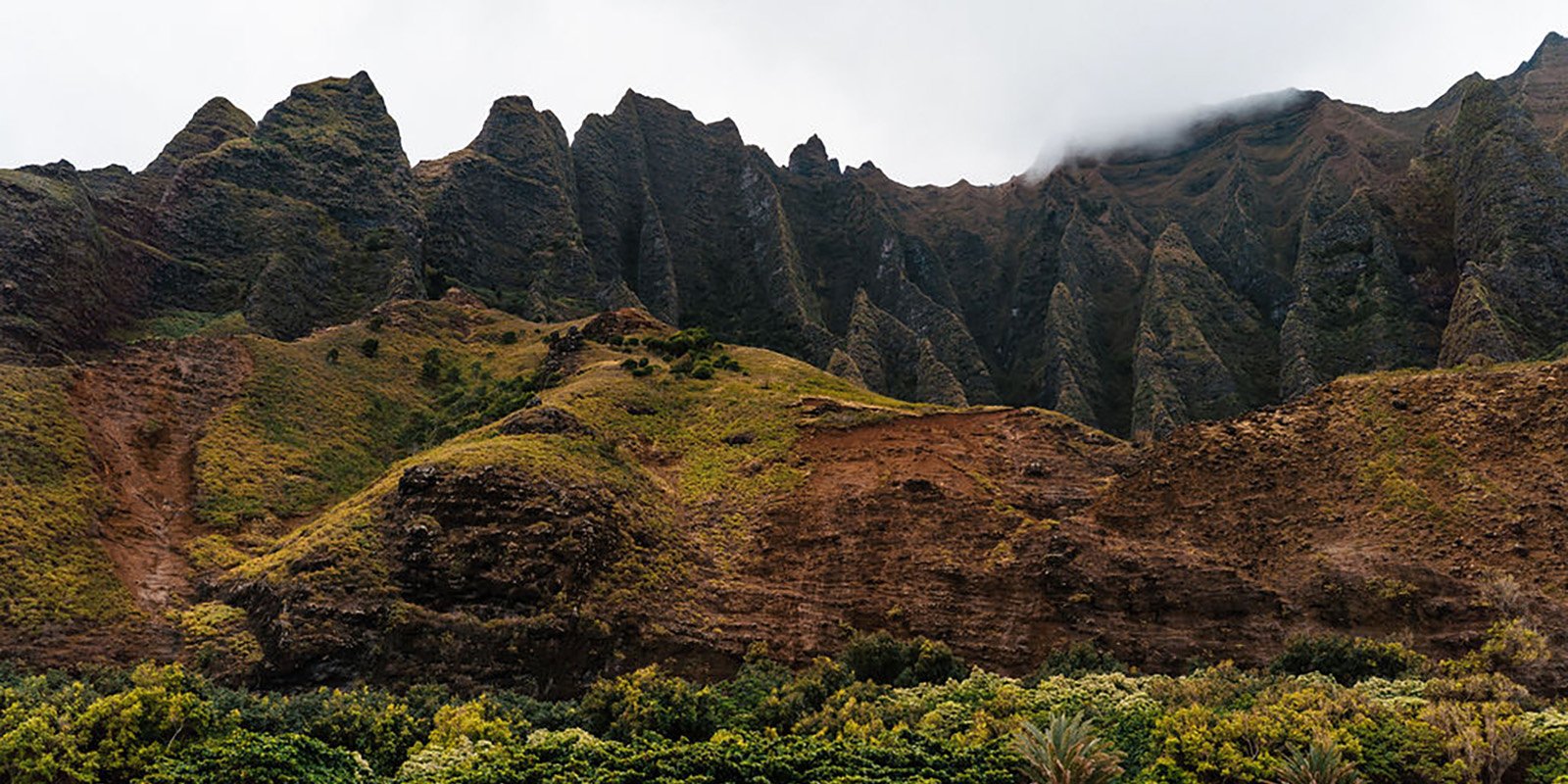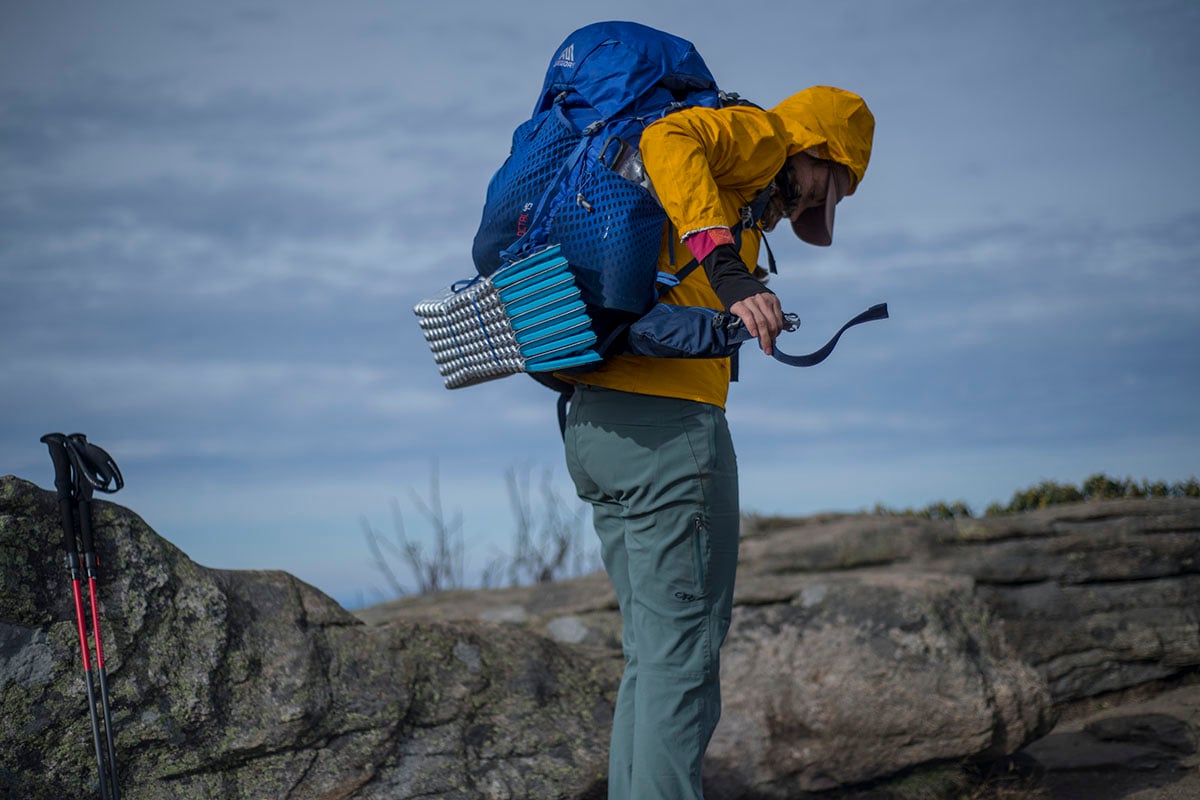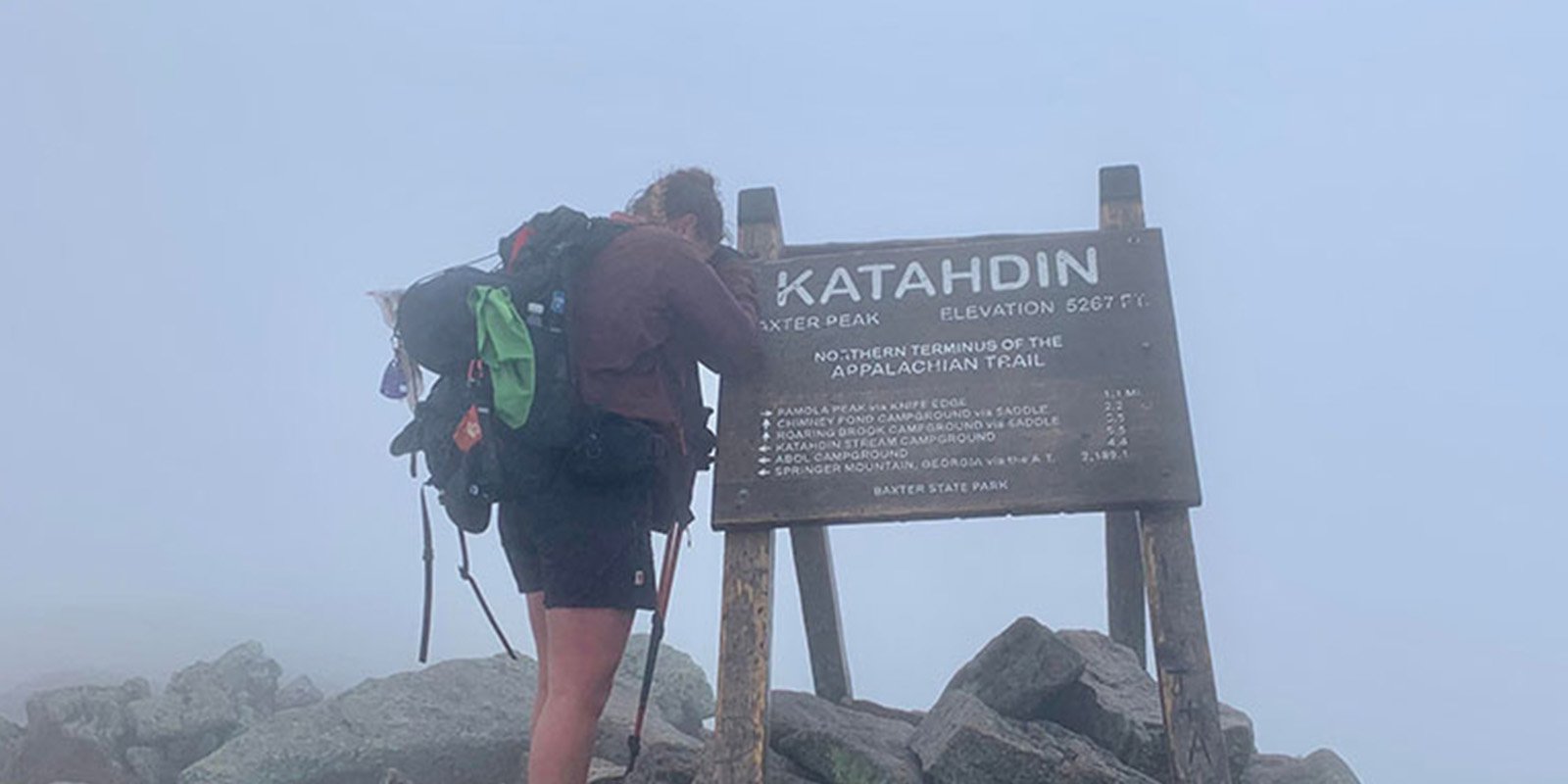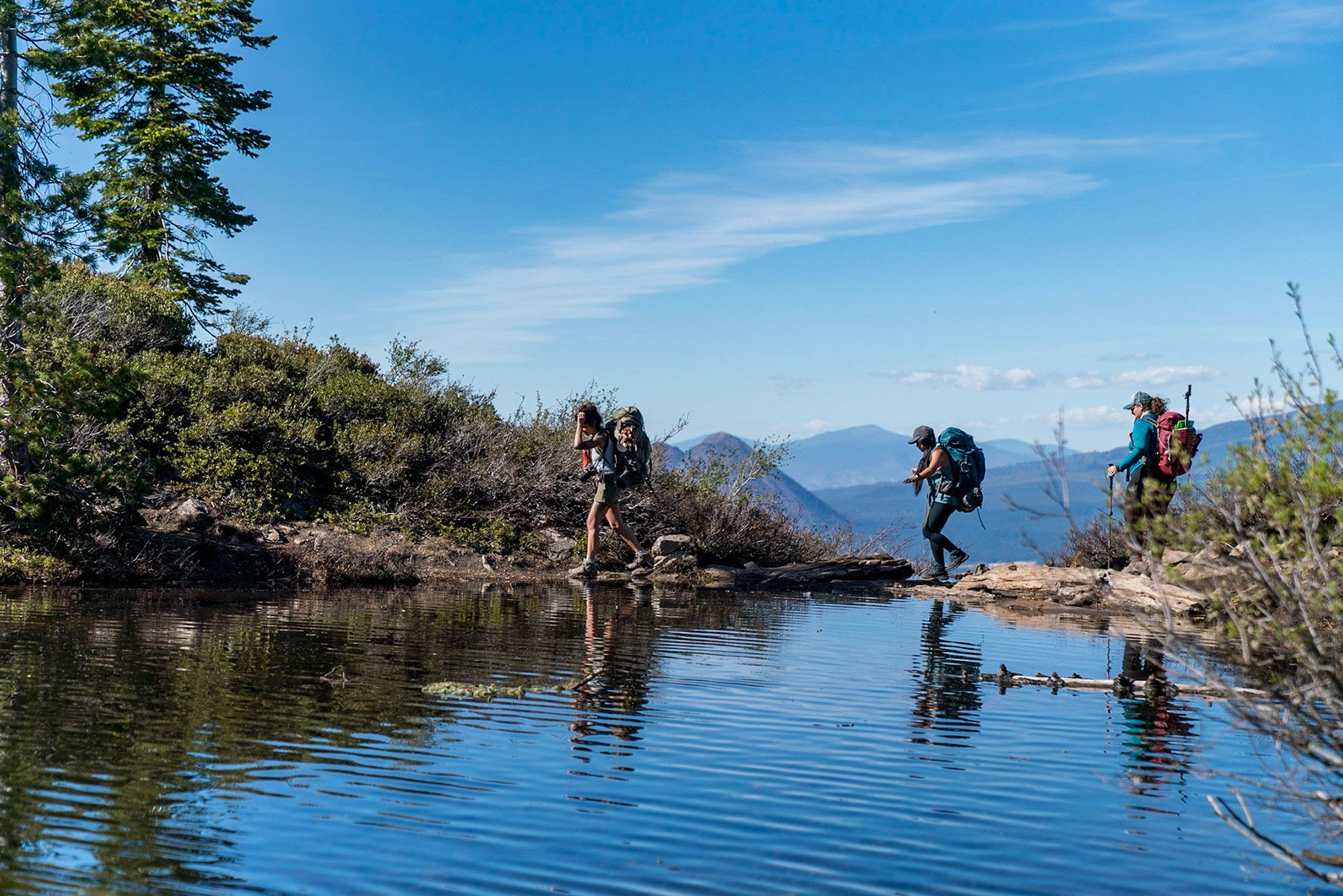Whether you’re headed out for a day hike or a multi-day backpacking trip, bringing a personalized first-aid kit should be as much of a priority as water, sunscreen, a hat, and footwear. A blister might bum out your hike, but deep wounds and broken bones can become a life-threatening situation in the backcountry. In such situations, a thoughtfully built, personalized backpacking and hiking first aid kit can make all the difference.
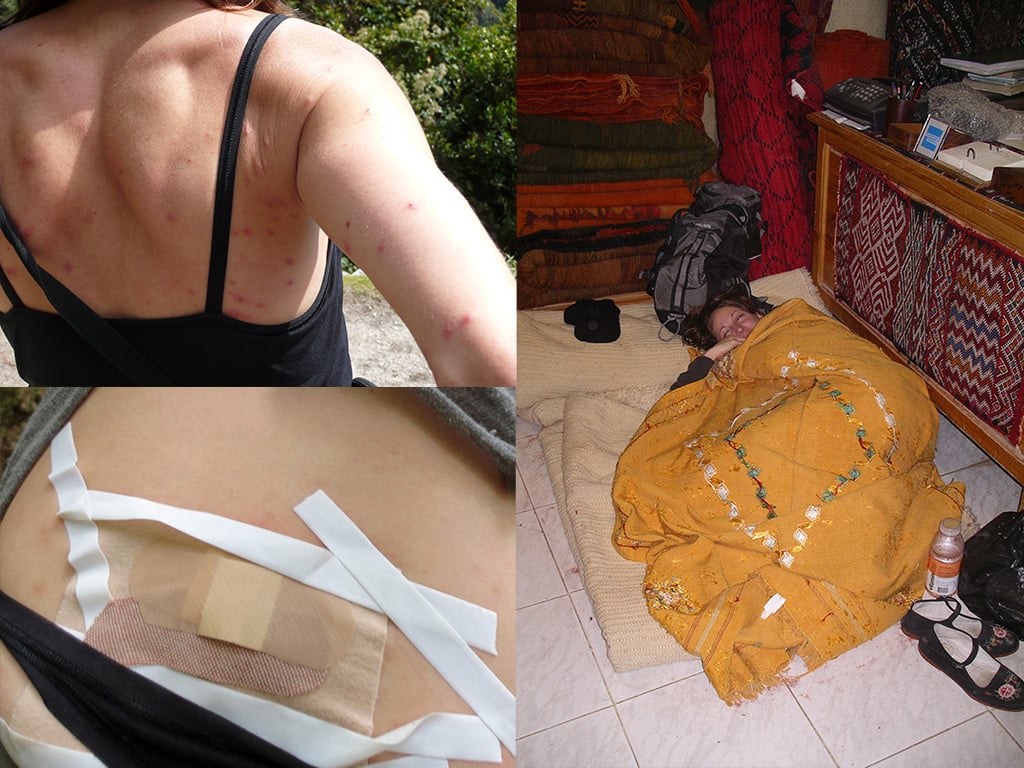
Over the past two decades, I’ve adapted my first aid kit to suit my needs–often based on painful (or humiliating) experiences and my own personal needs. I keep a small zippered first aid kit in my daypack, and a comprehensive, 9” x 6” nylon kit in my big backpack, which is used for both shorter domestic adventures and month-long international trips.
Personalize your backpacker first aid kit to suit your needs by expanding upon a basic–and ideally, waterproof–kit from a reputable outdoor or travel brand. Take your outdoor experience into account, as well as pre-existing conditions. For example, I have a bone spur on one of my lumbar vertebrae from years of using an ill-fitting pack. Although I now own a customized backpack, the spot can still get irritated, so I’ve learned to supplement my first aid kit. Moleskin, surgical tape and a sarong literally saved on me while backpacking the Kalalau Trail (I used the fabric as additional protective padding).
It’s also a good idea to keep a digital record of your medical insurance, any serious health problems and copies of all prescription drugs you’re taking, as well as contact information of your providers back home. Share them in an email with a friend or family member before you depart on your trip.
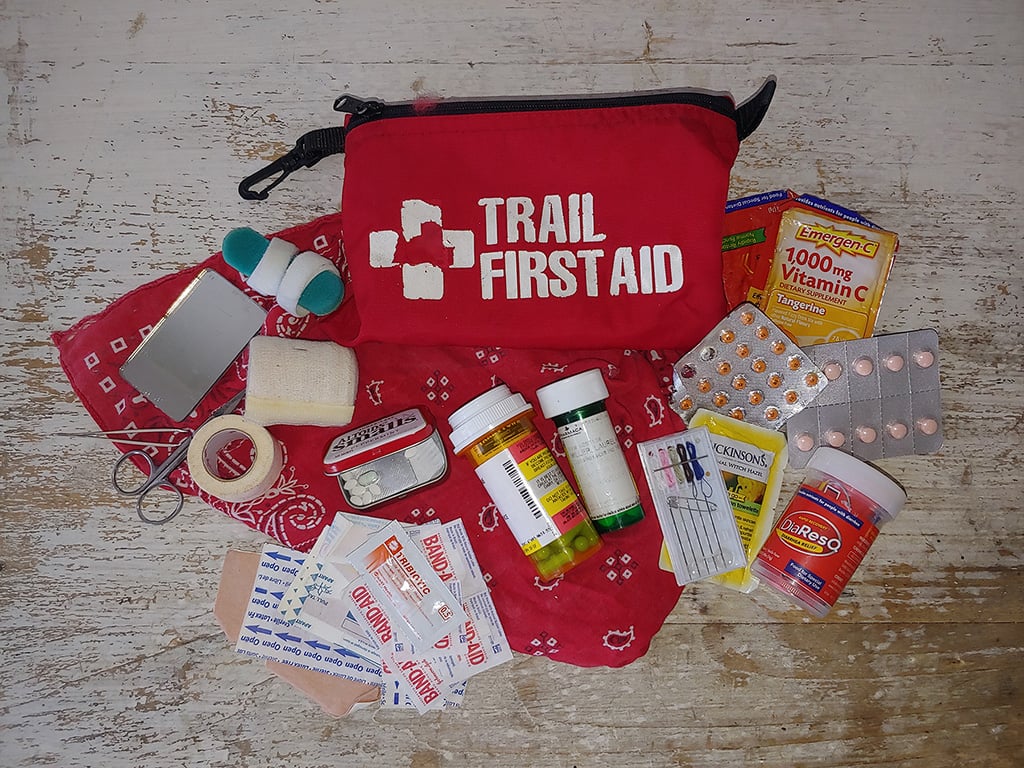
19 Essentials for Your Backpacking and Hiking First Aid Kit
This is my list of basics for every backpacking and hiking first aid kit, regardless of your experience level:
1. Band-aids (assorted sizes – get the fabric “waterproof” ones for the best adhesion)
2. Large Adhesive bandages
3. Gauze (Uncoated and coated pads, as well as a roll)
4. Surgical Tape
5. Alcohol Wipes and Hand Sanitizer
6. Moleskin
7. Matches (in a waterproof case)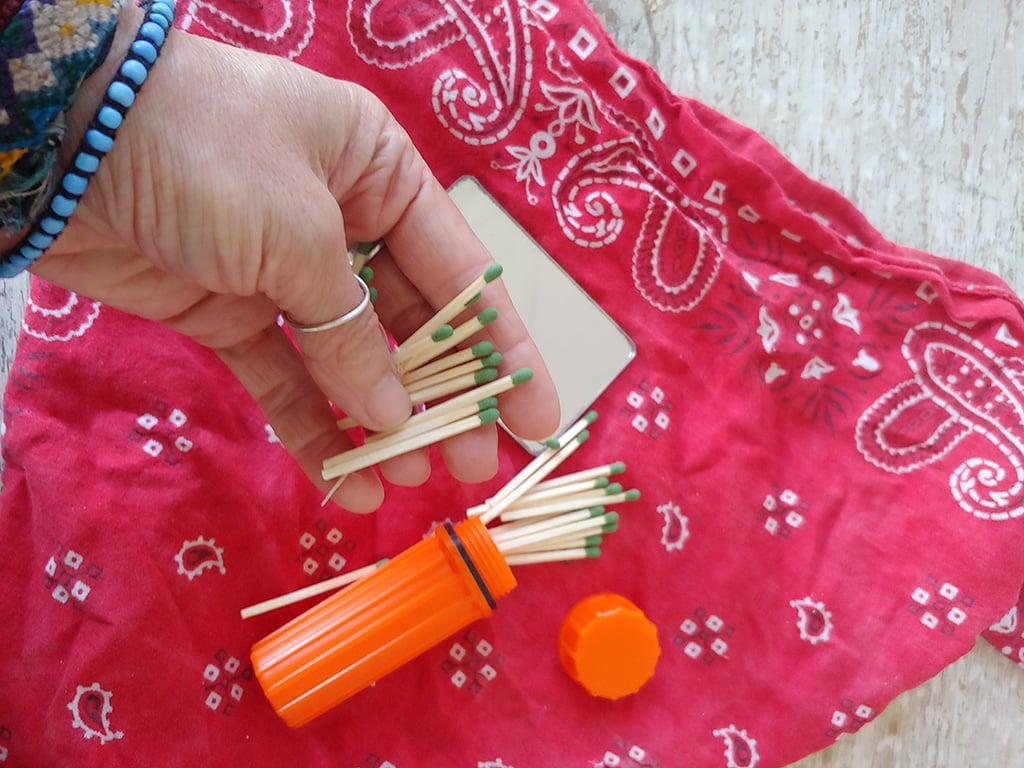 8. Face Mask: Even without Covid-19, this is handy for non-emergency situations like heavy air pollution. I added a mask to my kit after getting stuck in a Vietnamese guest house room positively opaque with insecticide.
8. Face Mask: Even without Covid-19, this is handy for non-emergency situations like heavy air pollution. I added a mask to my kit after getting stuck in a Vietnamese guest house room positively opaque with insecticide.
9. Latex Gloves: Whether someone needs to stitch you up or vice-versa, and generally good for protection from blood and fluids.
10. Travel Sewing Kit with Extra Needles: Use for draining blisters, removing splinters and more. You may also want to add small scissors, tweezers, and safety pins.
11. OTC Antibiotic Ointment
12. Hydrocortisone Cream
13. OTC Medications/Supplements (ibuprofen, aspirin, antidiarrheals (more on that in a moment), non-drowsy antihistamines/allergy meds, and immune supplements/electrolytes like Emergen-C, Airborne or Nuun.)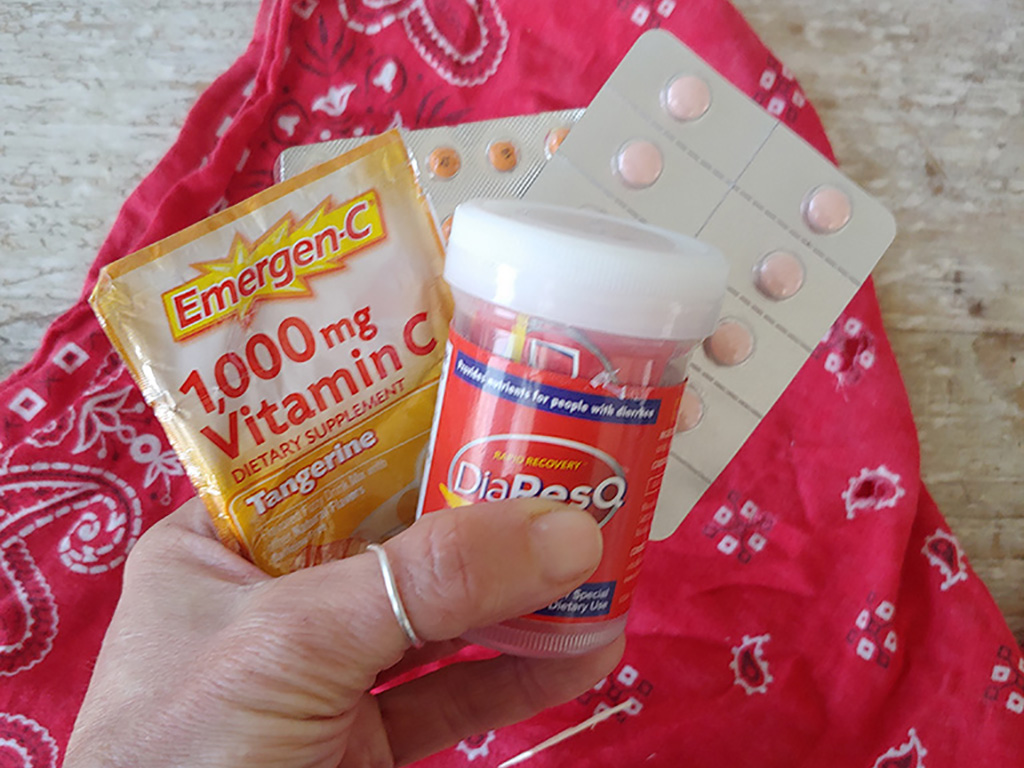 14. Prescription drugs: I’m not a doctor and I don’t recommend self-diagnostics or the use of antibiotics unless absolutely necessary, nor do I recommend purchasing prescription drugs over the counter in developing countries. With that said, sometimes circumstances require us to take matters into our own hands. Because of my vocation, I’ve had several instances where I’ve become seriously ill overseas and I’ve had to self-diagnose and administer a regimen of antibiotics. If you’re traveling to an international destination, particularly if it’s in the tropics and/or developing, I strongly recommend you visit a travel or infectious disease doctor with experience in tropical medicine before you depart and see their advice on what to bring and when it’s appropriate to use it.
14. Prescription drugs: I’m not a doctor and I don’t recommend self-diagnostics or the use of antibiotics unless absolutely necessary, nor do I recommend purchasing prescription drugs over the counter in developing countries. With that said, sometimes circumstances require us to take matters into our own hands. Because of my vocation, I’ve had several instances where I’ve become seriously ill overseas and I’ve had to self-diagnose and administer a regimen of antibiotics. If you’re traveling to an international destination, particularly if it’s in the tropics and/or developing, I strongly recommend you visit a travel or infectious disease doctor with experience in tropical medicine before you depart and see their advice on what to bring and when it’s appropriate to use it.
I personally carry a series of wide-spectrum prescription antibiotics to my first aid kit, including Doxycycline (bacterial infections or used in combination with other drugs for amoebic infections), Cipro (still considered one of the most effective drugs for serious bacterial infections), Metronidazole (also known as Flagyl, this knocks out anaerobic bacterial infections like giardia, and specific parasitic infections), Gentamicin for eye infections, and Tetracycline or Erythromycin for respiratory and streptococcal infections. Women may also want to carry OTC or prescription meds for UTIs (I carry Bactrim), yeast infections and bacterial vaginosis.
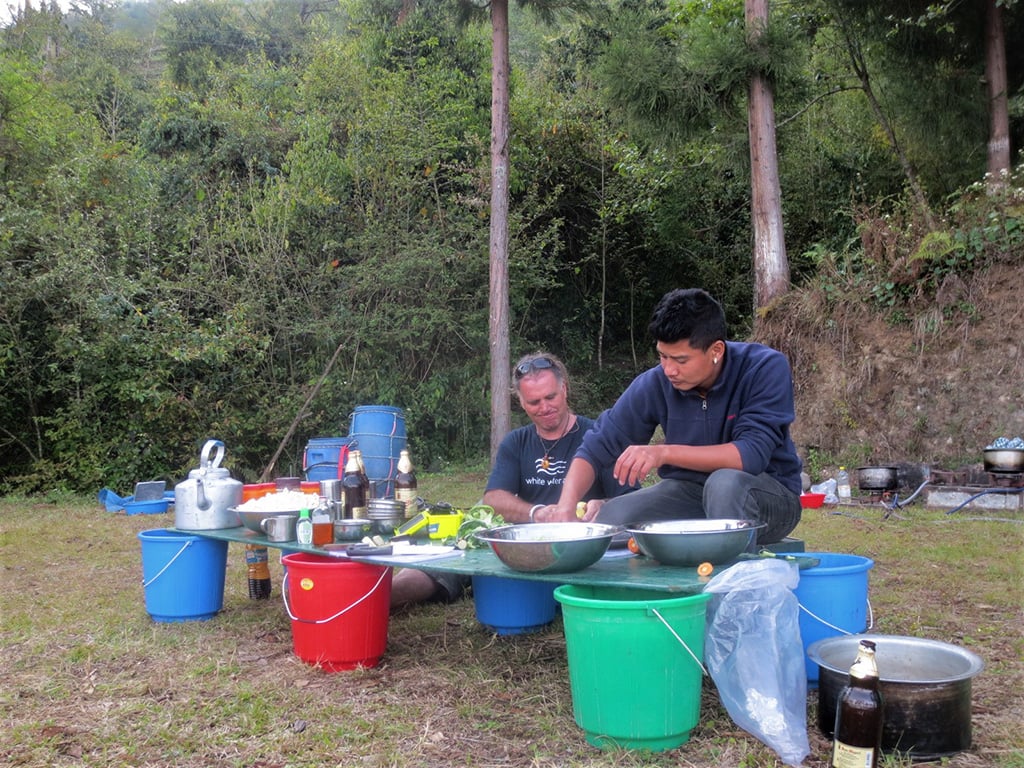 Even when hygiene is practiced and water boiled, it’s just too easy to get sick so better have Imodium, Rx for giardia and anti-nausea meds.
Even when hygiene is practiced and water boiled, it’s just too easy to get sick so better have Imodium, Rx for giardia and anti-nausea meds.If you’re suffering from severe diarrhea, Imodium is indispensable if you can’t avoid travel, but it’s not effective at preventing dehydration or resolving gastrointestinal issues. OTC medications like DiaResQ are food products designed to quickly relieve symptoms while maintaining immune and intestinal function rather than stopping you.
15. Thermometer: Digital versions won’t shatter and can last up to five years, but quality can vary widely. Spend more and get an accurate one. Personally, I prefer old-school analog thermometers because they can be stashed in a pill vial.
16. Travel Mirror: Whether you need it to remove a foreign object from your eye or send a signal if you’re lost, this is essential for all backpacker first aid kits.
17. EpiPen: Even if you don’t have a history of anaphylaxis, experienced world travelers know that an allergic reaction can be just a mouthful of street food or new antibiotic away. I added an EpiPen to my kit after working at a food festival and seeing a chef suffer anaphylactic shock from tasting an ingredient he’d been using for decades- sensitivities can develop over time. I was also glad I had it on hand on a raft trip, when one of the clients stepped on a yellow jacket nest while wearing flip flops.
18. Space Blanket: But you remembered to wear layers, right?
19. Ziploc Bags: I stash everything that comes in a tube in these, but they also work well as ice packs and for adding an extra waterproof layer to tablets and capsules.
